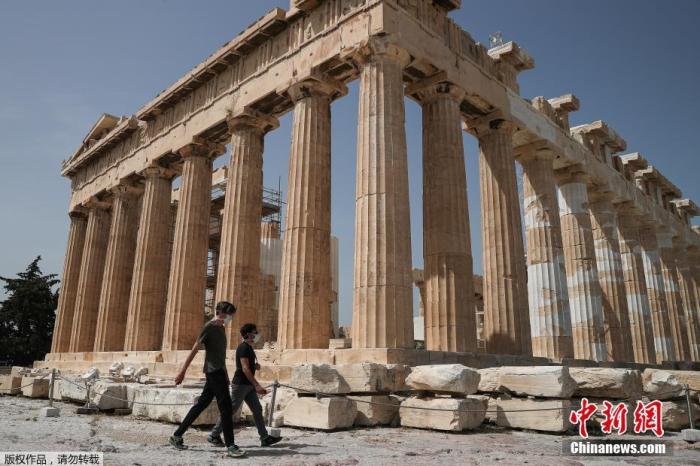China News Service, May 27th, according to the European Union quoted the Greek European Union News Agency reported on the 27th, the Greek government has once again requested the British Museum to return the Parthenon sculpture (also known as "Elgin marble sculpture") request, causing global culture The world's attention to these famous cultural relics.
According to reports, cultural tourism has long been one of Greece's important economic sources. Under the new crown epidemic, Greece has closed its archaeological sites and museums for more than two months, and it was finally reopened last week. "International Parthenon Sculpture Return Association" once again sent a letter to the Greek Ministry of Culture, calling on the Greek government to put pressure on the British Museum again.
On May 18th, local time, Athens, Greece, the Acropolis was opened to the public to attract tourists to visit. On that day, Greek open-air archaeological sites and various theme parks will be reopened from that day.
Greek Minister of Culture Mendoni said in a statement that Greece has reopened archaeological sites including the Acropolis, and at the same time, the authorities also received a letter from the "Return Association" requesting the return of the Parthenon sculpture. She said that these cultural relics eventually need to be returned to the Greek people and need to return to their hometowns.
Prior to this, Greek Prime Minister Mizotakis has formally submitted a request to the British government, hoping to "borrow" the Parthenon sculpture to return to the Greek exhibition to celebrate the commemoration of the 200th anniversary of the founding of Greece in 2021. The British Museum said it would give priority to reviewing any borrowing needs raised by Greece.
Looking back at history, in 1801 the British ambassador to Constantinople, Earl Elgin, removed the stone carving from the Parthenon building and carried it away. These stone carvings are mainly hidden in the British Museum. Some of the carvings are collected in the Louvre in Paris and Copenhagen in Denmark. Most of the remaining sculptures are still in the Acropolis Museum. A few sculptures can still be in the temple. Seen on the temple.
Greece began demanding the return of cultural relics about 30 years ago, but the British government has always refused, and said that the Parthenon stone carvings were sent to Britain with the permission of the then Greek ruler and the Ottoman Empire, with a clear source, not after the war Plunder.
The Greek government believed that the Ottoman Empire, which handed over these sculptures to Earl Elgin, was a historical aggressor. The regime could not represent the will of the Greek people, nor did it have the right to donate Greek artifacts to anyone, so the Ottoman Empire promised Any promises made are invalid. The Greek government had considered bringing the British government to the International Court of Justice on this issue, but in the end it still adopted a more diplomatic approach: asking UNESCO to mediate. But the British government explicitly rejected the relevant mediation proposal.
The major British museums and even the government have always held a negative and even confrontational attitude towards the issue of "return of cultural relics" that has been hotly discussed in recent years, which is very different from France, Italy and other European cultural powers. Even at the commemoration of the 200th anniversary of Greek independence, whether cultural relics can be temporarily returned to the original place is still unknown.
Because there are a large number of controversial cultural relics in the collections of the major cultural exhibition halls in the UK, the British government is worried that if a precedent for the return of cultural relics is opened, it will inevitably trigger many countries to require the British government to apply the same standards and even affect the income of the British cultural industry. Tickets, publications and authorization fees. (Liang Manyu)

